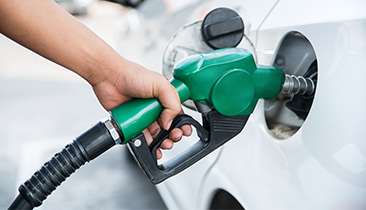Following the recent publishing of government guidelines and motor industry guidance in response to the Coronavirus (COVID-19) pandemic, many businesses servicing and repair cars have changed the way that they work, and have introduced new procedures to protect the safety of staff and customers at their premises.
We have therefore gathered together a few examples of some of the steps that have been taken by businesses to help minimise the spread of the virus.
Booking in of work
Businesses are:
- Publishing short videos on social media to reassure customers of the lengths being taken to ensure their safety when visiting a business for servicing or repair work
- Contacting the consumer prior to their visit to allocate an appointment time for them to drop off their vehicle. This limits the number of visitors on site at any one time, and allows for staggered arrivals
- Encouraging vehicle owners to come alone to minimise contact with others
- Completing the vehicle check-in process prior to the customer arriving on site
- Offering consumers a complementary sanitised courtesy car to avoid them having to wait with other individuals for the return of their vehicle, or to help keep them on the move if they need to travel to and from work
- Providing a collection and drop-off service, so there is no need for customers to visit business premises
Customer-facing areas
Businesses are:
- Asking consumers to wait in their vehicle on arrival before entering premises if a drive-through facility is available
- Making anti-bacterial wipes and hand sanitiser available, and requesting that customers and staff clean their hands on entry
- Offering a contactless drop-off area for car keys on arrival, and asking customers to remove them from the key ring (if they are with other keys) and to sanitise the keys before placing them in an enclosed container, such as an envelope
- Requesting that customers sanitise their driving licence before handing it to staff for the purpose of borrowing a courtesy car
- Displaying clear signage so that staff and customers are easily reminded of the measures that have been put in place for their safety, as well as the precautions that need to be taken to help maintain a hygienic environment
- Applying social distancing floor stickers to encourage and remind customers to stay two metres apart from other individuals, including in waiting areas
- Using a one-way system to control how customers move around premises to reduce contact between individuals
- Increasing the cleaning of frequent touchpoints and surfaces, and ensuring a no handshake policy
- Re-positioning or removing furniture so that a safe distance can be maintained between customers and staff members
- Limiting the amount of people within an enclosed space, such as in an office (e.g. one customer and one member of staff for small rooms)
- Using plastic screens to shield customers and staff at workstations, sales and parts desks
- Removing physical reading materials for use by customers, such as flyers, magazines and newspapers
- Closing the waiting area if social distancing cannot be maintained, and avoiding refreshments and hot drinks to limit personal contact
Work on customer vehicles
Businesses are:
- Ensuring that vehicle technicians adhere to social distancing measures when in the workshop
- Maximising the ventilation of premises as much as possible
- Sanitising the vehicle and applying plastic coverings on key touchpoints within the vehicle, such as the steering wheel, gear lever, handbrake, floor mats and seats
- Requesting that staff wash their hands and change gloves between every vehicle they work on
- Ventilating and sanitising vehicles after each job, and before any delivery or handover
Return of customer vehicles
Businesses are:
- Offering explanations by phone or video of the completed work and invoice prior to payment to reduce the length of contact between staff and customers on site
- Arranging a collection time with the customer to stagger the return of vehicles throughout the day
- Reducing the requirement for hand-written signatures where possible and the sharing of stationary, such as pens
- Providing the facility for contactless and mobile payments (e.g. Apple Pay), as well as protective gloves for customers needing to enter their PIN on a card machine (i.e. for amounts beyond the current contactless card payment limit of £45)
- Supplying receipts and invoices by e-mail to reduce the volume of paperwork being handled
- Ensuring the car key and common contact areas on the car are disinfected / sanitised prior to the vehicle being returned
REMEMBER:
- As required by Government guidance, undertake a full risk assessment to put in measures and safeguards appropriate for premises – in consultation with staff or workforce health and safety representatives (as appropriate)
- Print off and display the government’s online notice – Staying COVID-19 Secure in 2020 – to illustrate to employees and customers that you have followed the government’s guidance









